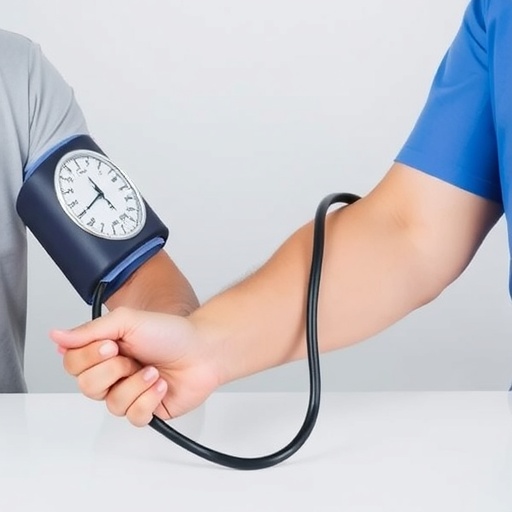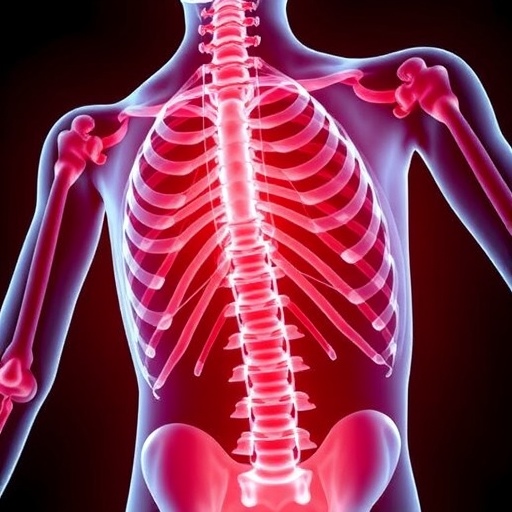In an era increasingly dominated by digital content, the accuracy of online health information remains paramount. A recent, groundbreaking study published in Hypertension, an esteemed journal of the American Heart Association, reveals a troubling disconnect between clinical best practices and the visual depictions of blood pressure measurement circulating on major stock photo websites. Researchers analyzed over a thousand images portraying blood pressure monitoring, only to find that a mere one in seven accurately demonstrated the correct procedures recommended by contemporary clinical guidelines. This alarming statistic raises significant concerns regarding public health education, particularly as millions rely on online images to guide their understanding of vital health practices.
This study’s revelations are striking given how frequently individuals monitor their blood pressure outside traditional health settings. With nearly half of U.S. adults diagnosed with hypertension, the ability to correctly self-measure blood pressure has become an indispensable aspect of managing cardiovascular health. The growing trend toward home blood pressure monitoring underscores the critical need for reliable visual aids that reinforce the nuances of proper technique. However, the pervasiveness of inaccurate or misleading images on high-traffic stock photo sites risks perpetuating erroneous practices, potentially culminating in misdiagnoses or inappropriate treatment regimens.
Fundamentally, the research scrutinized images based on criteria adapted from the 2023 International Consensus on Standardized Clinic Blood Pressure Measurement. This consensus outlines precise requirements for obtaining valid blood pressure readings, such as patient posture, arm positioning, cuff placement, and ambient factors during measurement. Despite these evidence-based guidelines, the analysis revealed striking deviations in depicted techniques. Among the most frequent errors were unsupported backs, unsteady forearms not resting on flat surfaces, and blood pressure cuffs placed over clothing rather than directly on bare skin. Such discrepancies, though seemingly minor, can materially influence blood pressure readings and subsequent clinical interpretations.
One particularly notable finding was the disparity in accuracy between images depicting blood pressure measurement at home versus clinical settings. Visuals portraying home-based monitoring were roughly three times more likely to be accurate than those set in physicians’ offices or hospitals. This paradox highlights a crucial gap in public health communications: while clinical settings should ideally exemplify correct procedures, the images associated with these environments often fall short, undermining trust and potentially confusing patients. Moreover, images showing patients self-monitoring were significantly more truthful to protocol compared to those featuring health care professionals administering the measure, pointing to systemic lapses even among trained practitioners.
The implications extend beyond visual representation alone. The “picture-superiority effect,” a psychological phenomenon whereby individuals better recall information presented as images rather than text, intensifies the risk posed by inaccurate visuals. Inaccurate photo depictions may embed false procedural norms in viewers’ minds, which, when translated into practice, could yield misreadings by patients and healthcare providers. These errors in measurement can lead to inappropriate therapy adjustments—whether excessive or insufficient medication—that compromise patient outcomes and inflate the burden of cardiovascular disease.
Additionally, many images featured devices that contravened guideline recommendations. More than half of the photos inaccurately depicted the use of manual, self-pumping devices instead of electronic, battery-operated upper-arm blood pressure monitors, the latter being preferred for their reliability and ease of use. Furthermore, behaviors known to skew readings, such as talking or laughing during measurement, were frequently evident among subjects in photographs. These depictions trivialize essential aspects of the measurement process, further diluting the instructional quality that such images are expected to provide.
The comprehensive nature of the study merits emphasis. Researchers approached their analysis with methodological rigor, collating images from eleven prominent online stock photo sites using a systematic search strategy and applying stringent inclusion criteria. Two independent reviewers analyzed each eligible image against a detailed checklist reflecting the consensus guidelines. Conflicting assessments were collectively deliberated to reach consensus, underscoring a robust validation process meant to ensure accuracy and reliability of findings. The breadth of the sample—over a thousand images—lends credence to the assertion that these inaccuracies are widespread rather than anecdotal.
This inquiry is unprecedented in its focus. Previous research has extensively documented errors in blood pressure measurement technique among healthcare providers and patients, but this is the first systematic evaluation of publicly accessible images, which serve as critical educational resources. The study highlights the necessity for media outlets, academic institutions, healthcare organizations, and stock photo agencies to scrutinize and revise their visual content. Correcting these misrepresentations is vital to enhance health literacy and empower individuals to make informed decisions regarding cardiovascular health.
The study authors advocate for proactive measures to address these deficiencies. They urge creators and distributors of health-related content to integrate internationally accepted clinical standards into the visual narratives they present. By ensuring that online images accurately depict the stepwise protocol for blood pressure measurement—such as sitting with a supported back, arm at heart level, feet flat on the floor, and usage of appropriate equipment—public health education can be significantly fortified.
It is essential to acknowledge the limitations reported by the authors. Some images lacked sufficient detail to assess certain criteria definitively, such as the patient’s foot position or precise arm placement. Additionally, many images were likely designed without consideration of current clinical guidelines, which may explain inaccuracies without implying intentional misrepresentation. Nonetheless, as these images often serve as the default visual references on widely accessed platforms, their practical impact on public knowledge and behavior cannot be underestimated.
An element of concern is the accessibility and reliability of educational resources on government and nonprofit health websites, where one might expect higher standards. Unfortunately, incorrect images were found even on these reputable sites, amplifying the risk of misinformation extending into clinical care and patient self-management. This finding emphasizes a pressing need for cross-sector collaboration to curate and disseminate accurate visuals to accompany textual health guidance.
Given the widespread use of blood pressure self-monitoring devices, especially electronically automated upper-arm cuffs, the study’s insights are timely. Accurate measurement underpins effective hypertension diagnosis and management, which remain crucial in mitigating cardiovascular morbidity and mortality globally. The misalignment between recommended techniques and their visual depiction could hamper efforts to control hypertension, ultimately affecting millions at risk.
The American Heart Association complements this study by providing extensive resources to educate the public on proper blood pressure measurement. Videos, detailed protocols, and guidelines are available through their platforms to support correct home monitoring practices. Such resources are indispensable adjuncts to visual materials that are frequently encountered on the internet, and together they form a comprehensive arsenal for combating hypertension through patient empowerment.
Overall, this research shines a spotlight on an overlooked but vital aspect of health communication—the accuracy of images that inform and influence behavior. As digital media continues to permeate health education, ensuring that stock photo libraries accurately represent clinical realities is imperative. The study’s findings serve as a call to action for all stakeholders involved in producing and curating health content to align visual media with scientific standards, thereby supporting better health outcomes worldwide.
Subject of Research: Accuracy of online stock photo images depicting blood pressure measurement techniques in relation to clinical guidelines.
Article Title: Poor Accuracy of Blood Pressure Measurement Images Online: Implications for Public Health Education
News Publication Date: September 8, 2025
Web References:
Hypertension Journal Article DOI
American Heart Association Blood Pressure Monitoring Resources
References:
2023 International Consensus on Standardized Clinic Blood Pressure Measurement.
American Heart Association’s 2025 Heart Disease and Stroke Statistics.
Keywords: Blood pressure, Hypertension, Cardiovascular disorders, Blood pressure measurement accuracy, Home blood pressure monitoring, Clinical guidelines, Public health education
Tags: blood pressure measurement techniquescardiovascular health managementclinical best practices for hypertensiondigital content in health communicationhypertension awareness and educationimportance of accurate medical visualsmisleading health imagery risksonline health information accuracypublic health education challengesself-measuring blood pressure correctlystock photo website health imagesvisual aids for health education





